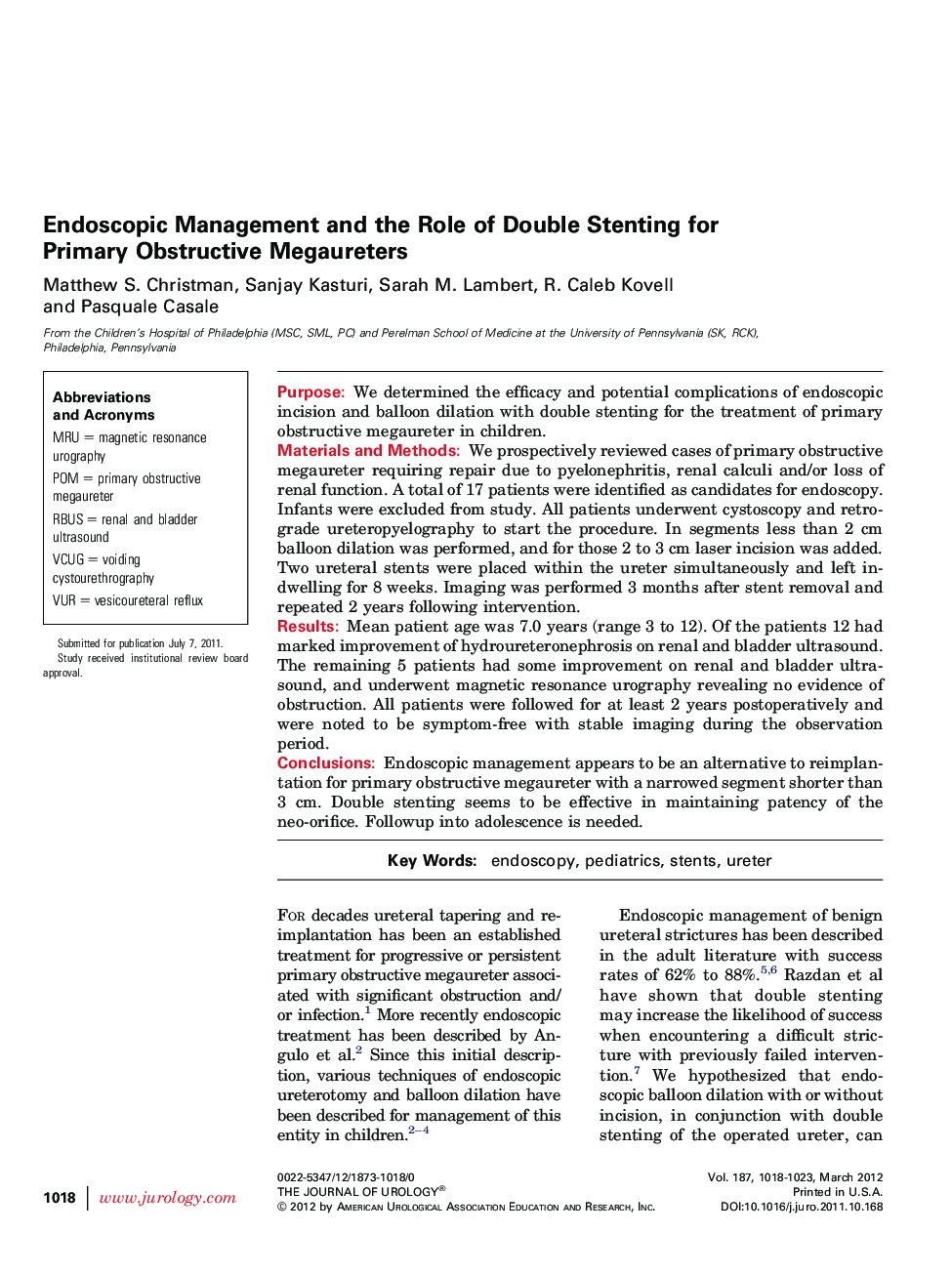| Article ID | Journal | Published Year | Pages | File Type |
|---|---|---|---|---|
| 3868889 | The Journal of Urology | 2012 | 6 Pages |
PurposeWe determined the efficacy and potential complications of endoscopic incision and balloon dilation with double stenting for the treatment of primary obstructive megaureter in children.Materials and MethodsWe prospectively reviewed cases of primary obstructive megaureter requiring repair due to pyelonephritis, renal calculi and/or loss of renal function. A total of 17 patients were identified as candidates for endoscopy. Infants were excluded from study. All patients underwent cystoscopy and retrograde ureteropyelography to start the procedure. In segments less than 2 cm balloon dilation was performed, and for those 2 to 3 cm laser incision was added. Two ureteral stents were placed within the ureter simultaneously and left indwelling for 8 weeks. Imaging was performed 3 months after stent removal and repeated 2 years following intervention.ResultsMean patient age was 7.0 years (range 3 to 12). Of the patients 12 had marked improvement of hydroureteronephrosis on renal and bladder ultrasound. The remaining 5 patients had some improvement on renal and bladder ultrasound, and underwent magnetic resonance urography revealing no evidence of obstruction. All patients were followed for at least 2 years postoperatively and were noted to be symptom-free with stable imaging during the observation period.ConclusionsEndoscopic management appears to be an alternative to reimplantation for primary obstructive megaureter with a narrowed segment shorter than 3 cm. Double stenting seems to be effective in maintaining patency of the neo-orifice. Followup into adolescence is needed.
